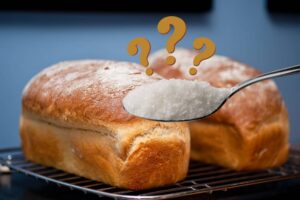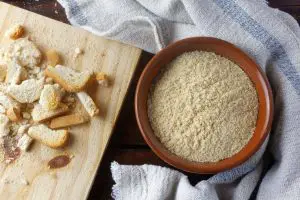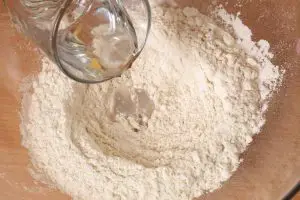There are frustrating times when you misread a recipe, or simply spill a bottle, and end up with too much oil in your bread dough. To sort out those problems, you’ve got a few great options! We’ve done some research to find the best ways, so let’s talk about them!
No products found.
Too much oil in bread dough: four clever solutions
1. Make rolls instead of a loaf
This is probably the easiest way to make use of your bread dough without adding other things, or going through a whole bunch of other efforts – small bread rolls will be really easy to make, and you’ll end up with some really convenient and tasty morsels to chow down on. Rolls are convenient when making bread for a family – one roll per family member is easier than slicing a specific amount of bread for each person!
When making bread dough, oil binds with the gluten in the recipe. During cooking, this finds its way to the edges of dough balls, so oil on the outside edge will lead to a well-browned and crispy exterior surface. This can result in a wonderfully textured bread roll – give it a go!
2. Knead while adding flour
When making bread dough, you’ll learn the rough way that dough should feel – neither too soft nor too firm. If you find that you’ve added an awful lot of oil to your dough relative to the other ingredients, you’ll likely feel that it’s too wet, and won’t come together as easily as a stiffer dough might.
We would suggest adding flour roughly a half-cup at a time and kneading the dough continuously. Over time, the added flour will correct the oil/flour ratio, and you’ll end up with a dough that’s wonderfully kneaded.
Another handy thing about this is that additional kneading will result in spectacular gluten formation. In turn, this will mean that your dough will rise well before going into the oven, and remain soft and chewy once baked.
As odd as it might sound, adding flour will make the dough lighter. As the flour absorbs the oil, it will correct the ingredient ratios in the bread, leading to a brilliantly light loaf.
3. Make a yeast slurry, and knead it into your dough
This is an option that might sound a little odd, but we assure you that it will work. We would suggest making a small yeast slurry of around half a cup of warm water and a teaspoon of instant yeast. Quickly mix the two together, and then add the mixture to your dough. Knead the liquid in, making sure to knead for a few minutes afterward so that the mixture is well dispersed through the bread.
The addition of more yeast and water will allow for the dough to rise more over time. The yeast will become active during the proving process, leading to carbon dioxide bubbles throughout the loaf. In turn, this lightness will negate the heaviness of the dough, leading to an altogether lighter loaf of bread.
4. Add an egg yolk to your dough
This might sound a little odd at first, but it’s a trick based upon some real science!
You might remember from chemistry class at school that oil and water don’t mix. This is true – they’re immiscible. The chemicals which allow them to mix are emulsifiers. There are a number of artificial emulsifiers used in the food industry, but a great natural one is a lecithin – a key component of egg yolks.
By adding an egg yolk to your dough, the liquid content of the bread will become one liquid rather than being oil and water. This, in turn, will allow the oil to hydrate the flour, leading to a bread dough that’s more cohesive.
The end bread might be a little more enriched and fatty – like challah, but not as rich – but as long as that’s something you can enjoy then the dough will be great!
We hope that this article has been able to help you learn a thing or two about the best ways to resolve too much oil in your dough. Something important to remember is that making bread is science – even if you make a mistake, you learn something new! Just make sure to write it down.
Good luck with all your bread-making endeavors, whether they contain oil, egg yolk, or neither!






